Primary Sources
Primary Sources

Teachers, need a primary source to create a lesson in the classroom? Students, need a source for a research project?
Here, we've listed the primary sources featured in our Unit Plans. Click on a primary source to go to its page, where you may find additional images, transcriptions of the text, a citation guide for including the source in a bibliography, or ways to purchase copies of the source for the classroom.
HSP's collections are not limited to the primary sources listed here. To see all that HSP has to offer, come visit us or explore our collection online through the Digitial Library and the Discover online catalog.
Some sources have handwriting that is difficult to read. If you need help decoding handwriting, check out this guide from Ancestry.
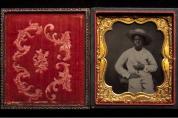 A portrait of a young African American boy from circa 1861-1865. |
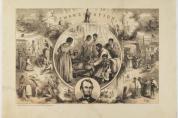 This image appeared as an illustration in the January 24, 1863 issue of Harper's Weekly. It celebrated President Abraham Lincoln's decree emancipating slaves during the Civil War. At the top of the illustration, the female figure Columbia, an early symbol of the United States, cheers emancipation. A portrait of President Lincoln is inset below. |
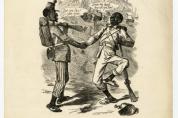 A print from 1863 with text that reads, "When Black Meets Black, Then Comes the End of War--and Slavery." |
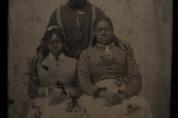 This tintype is a full-length portrait of an African American family, with a man standing next to his seated wife and daughter. |
 A lithograph with an inscription that reads, “Published by the Supervisory Committee for recruiting colored regiments. 1210 Chestnut St. Philadelphia.” |
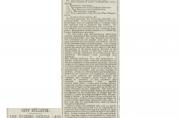 The proprietor of the Evening Journal in 1861 was a gentleman by the name of Albert Boileau, He was arrested because he was responsible for the Journal's publication of articles that denounced certain strategies of the North's effort in the Civil War and disparaged Lincoln's administration. This article debriefs the public on the court case that examined the legality of what the northern newspaper, the Evening Journal, printed for the public. |
 This bulletin published in 1863 informs readers of the arrest of the proprietor of the Philadelpia Evening Journal, Dr. Albert Boileau, as well as of an associate of the Journal. The Journal recently published articles that derided the government and presidential administration, which is also mentioned in the article. Although stating that the reason for the arrests is unknown, the author of this report connects the two events, whereby highlighting the intolerance of dissident opinions regarding the political administration of the North during the Civil War. |
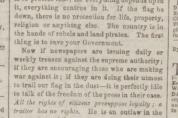 An editorial published during the Civil War, the author warns the public of insidious Southern decrees that may misguide readers about the suppression of "treasonable presses" in New York. The editorial debates violation of the First Amendment, by declaring that all supporters of the secession are in fact traitors, and have no rights, including freedom of the press. |
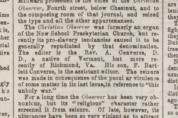 This newspaper article from an 1861 Evening Bulletin informs the public about the shutdown of a "rebel newspaper" called the Christian Observor. The Christian Observor is described as "obnoxious" due to its pro-slavery stance. |
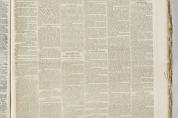 This article, published in the midst of Civil Wartime in Philadelphia, is a metaphorical piece that emphasizes the significance of ideological war efforts. The author, Cromwell, chides the government for not taking preventive action to eliminate the circulation of secessionist printed matter in the North. The fact that the administration has not cracked down on the postal service or "traitor prints," which engender support for the South in the North, has enraged the author. |
 New Hampshire's Tobias Lear was on the scene during the long slow death of President George Washington at Mount Vernon. His detailed and carefully written account offers a detailed view of Washington's last moments. |
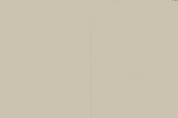 An excerpt published in the Philadelphia Inquirer during the Civil War era, this editorial informs the public of the Federal Marshall's decision to suppress another local paper, Christian Observer. The attack and suppression of the Christian Observer comes as a result of its anti-Union sentiments. Obviously deriding the Christian Observer, it is clear that the Philadelphia Inquirer supports the government's decision. This is a clear cut demonstration of the Inquirer's Republican bias at the time. |
- ‹ previous
- 13 of 22
- next ›
